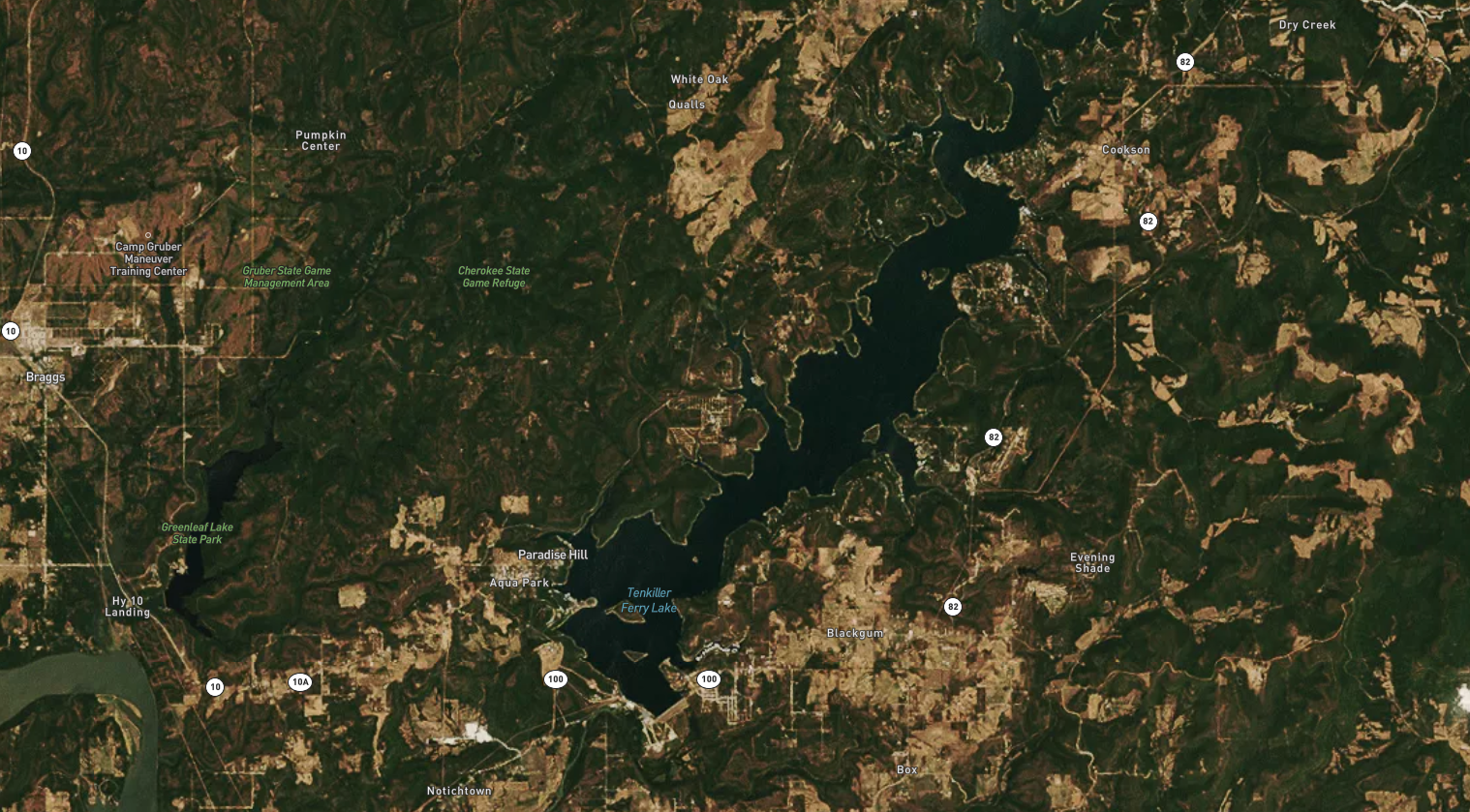
We often refer to fishing as a puzzle, and it’s important to consider that some of the most important pieces might appear even before you put the boat in the water. There are clues all around us and if you pay attention, these pieces can help you figure out what the fish are doing that day.
Here’s a good example: Every day I go deer hunting in Oklahoma, I drive across a bridge that cuts the upper third of Lake Tenkiller. As I pass over the lake, I can see a couple miles of the upper end and a mile doing down.
The one thing I look for is the concentration of birds; mostly white pelicans, sea gulls and cormorants. You don’t see a lot of these birds there in the summertime, but they’re here during the fall transition because the bait is making a major move. The fish are following the same bait schools that the birds are following, so this annual occurrence tells me a lot about what to expect on the lake.
Each day these birds advance farther with the bait migration, but this movement is subject to the weather. I’ll see the birds one day and 10 days later, they’ve moved almost all out of sight. But then once the first big cold front arrives, they move back down. It’s almost like a tide going in and out.
The birds are usually in a tight area, 250 yards, so that tells me the bait is in this zone. I’ve found that this is a pretty precise line — it’s a divider between the fall pattern and the winter pattern. It’s that water temperature change and that bait will stay right around that line, depending on what they want.
I’ve been sitting in the deer stand and thinking about fishing lately, and I can remember days of starting off in the morning by throwing a little finesse jig and a jerkbait. You have gloves on and you’re fishing really slowly, and by 1 o’clock, you’re on the lower end throwing a buzzbait in 58-degree water and catching big ones.
It’s like there’s two different lakes in one this time of year, and it’s all about water temperature. That’s why I watch those birds so closely, because it tells me how the weather affects those fish. You may get a warming trend and that bait may move really quickly up the river, and then you get a cold shock and they may back out and sit for a while.
Some days I may see those birds just sitting on the water and not doing anything. That tells me those shad are probably still in the area, but they’re sitting deep. Then there are days when everything is crazy. You can see not only pelicans moving around a lot, but you can see feathers floating everywhere and you just know there’s been a lot of activity.
In a day, you may notice two or three different cues given to you by nature, but if you pay close attention, there may be more. It’s hard to learn it all in one day, but over time, you learn to see how these hints combine to make up a picture of the day’s fishing and that helps you put it all together.
Remember that weather provides a constant set of variables that all contribute to this big picture, but don’t make the common mistake of shorting your weather outlooks. What a lot of people do is they only look at the weather forecast for the days they’re going to fish. That’s important, of course, but don’t stop there.
When I go fishing, I also want to know what happened two or three days earlier, because those weather patterns will likely have some affect on my fishing days. I mean you might drive all the way down to the lake and find it calm and pleasant, but you didn’t know it blew 30 mph a day earlier.
Water clarity might give you some indication, but if you can’t tell, take a look at the bank and if you see that the rocks 3 feet up the bank are wet and there’s leaves and debris up there. Then you know it was probably windy. Now, I’ve seen that have a positive impact and a negative impact on the fishing, but I always want to know about these impacts before my fishing days.
Like all of nature’s clues, the sooner you detect the changes, the sooner you can factor them into your game plan.

